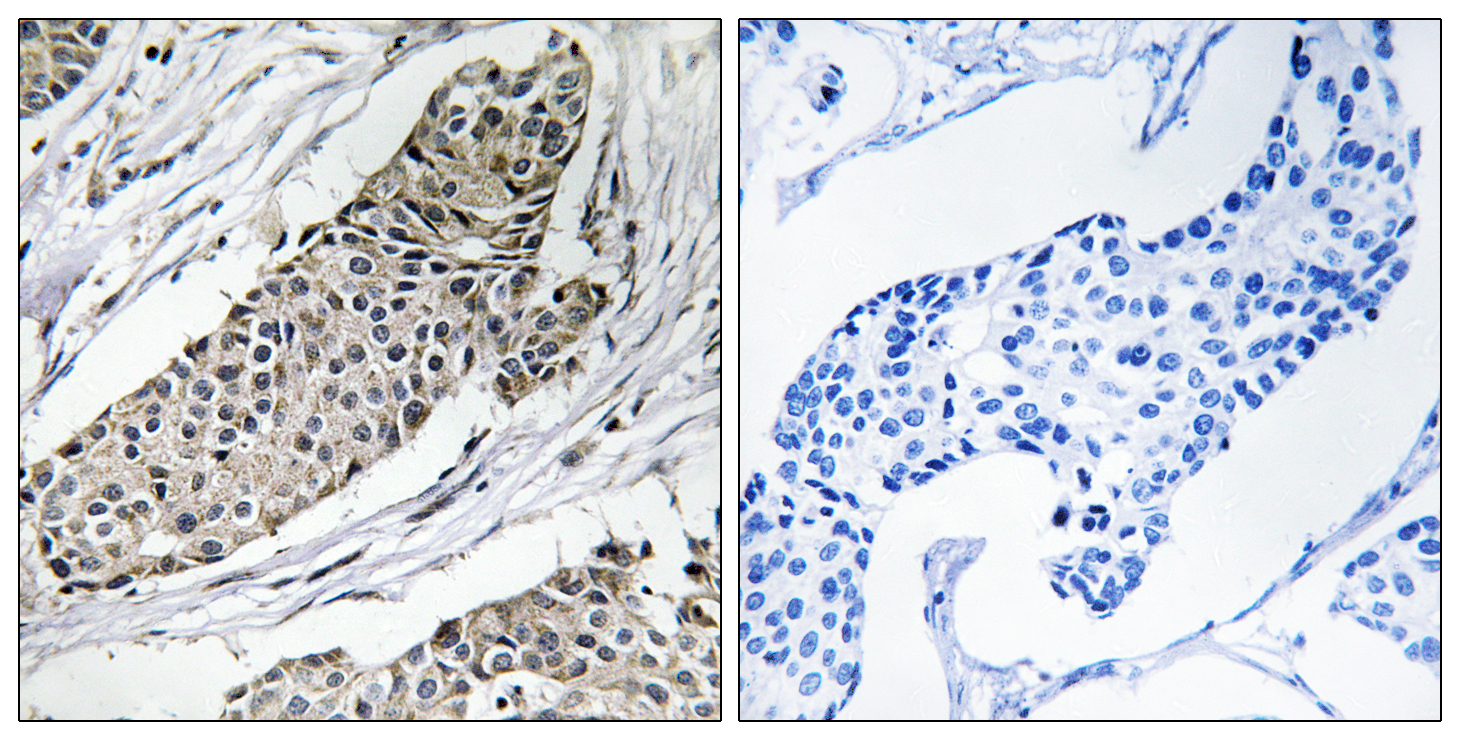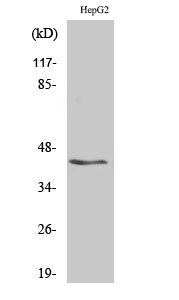产品名称
KVβ.3 Rabbit Polyclonal Antibody
别名
KCNAB3; KCNA3B; Voltage-gated potassium channel subunit beta-3; K(+) channel subunit beta-3; Kv-beta-3
蛋白名称
Voltage-gated potassium channel subunit beta-3
存储缓冲液
Liquid in PBS containing 50% glycerol, 0.5% BSA and 0.02% New type preservative N.
Human Gene Link
http://www.ncbi.nlm.nih.gov/sites/entrez?db=gene&term=9196
Human Swissprot No.
O43448
Human Swissprot Link
http://www.uniprot.org/uniprotkb/O43448/entry
Mouse Swissprot No.
P97382
Mouse Swissprot Link
http://www.uniprot.org/uniprot/P97382
Rat Gene Link
http://www.ncbi.nlm.nih.gov/sites/entrez?db=gene&term=58981
Rat Swissprot Link
http://www.uniprot.org/uniprot/Q63494
免疫原
The antiserum was produced against synthesized peptide derived from human KCNAB3. AA range:293-342
特异性
KVβ.3 Polyclonal Antibody detects endogenous levels of KVβ.3 protein.
稀释度
WB 1:500 - 1:2000. IHC 1:100 - 1:300. ELISA: 1:10000.. IF 1:50-200
宿主
Polyclonal, Rabbit,IgG
背景介绍
This gene encodes a member of the potassium channel, voltage-gated, shaker-related subfamily. The encoded protein is one of the beta subunits, which are auxiliary proteins associating with functional Kv-alpha subunits. The encoded protein forms a heterodimer with the potassium voltage-gated channel, shaker-related subfamily, member 5 gene product and regulates the activity of the alpha subunit. [provided by RefSeq, May 2012],
组织表达
Brain specific. Most prominent expression in cerebellum. Weaker signals detected in cortex, occipital lobe, frontal lobe and temporal lobe. Not detected in spinal cord, heart, lung, liver, kidney, pancreas, placenta and skeletal muscle.
功能
domain:Alteration of functional properties of alpha subunit is mediated through N-terminal domain of beta subunit.,function:Accessory potassium channel protein which modulates the activity of the pore-forming alpha subunit. Alters the functional properties of Kv1.5.,similarity:Belongs to the shaker potassium channel beta subunit family.,subunit:Forms heteromultimeric complex with alpha subunits.,tissue specificity:Brain specific. Most prominent expression in cerebellum. Weaker signals detected in cortex, occipital lobe, frontal lobe and temporal lobe. Not detected in spinal cord, heart, lung, liver, kidney, pancreas, placenta and skeletal muscle.,
纯化
The antibody was affinity-purified from rabbit antiserum by affinity-chromatography using epitope-specific immunogen.


